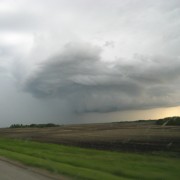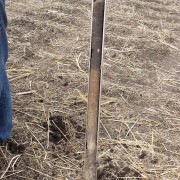Managed Risk – Part 3: Credit
You’ve read how I am a fan of Seth Godin’s daily blog. His entry on Thursday September 17 was titled
Serving Size. He writes about how it is “our instinct to fill the bowl” with “bowl” being a metaphor that
could apply to anything and everything from our homes to our egos. For now, let’s consider the “bowl”
to be thought of as “debt.”
If you’re like most farm businesses, you’ve been getting a bigger debt bowl over the last 5-7 years. In
fact, I would bet that if you looked back at your statements from 2005, you would wonder how you even
managed to operate with such little debt (relative to what you’re carrying today.) This is not unique, and
considering western Canadian agriculture (especially grains) has been in a boom for the last 7 years or
so, it is of little surprise that debt levels have also increased.
The question then begs, “How big can the bowls get?”
Lenders love to see strong cash flow and increasing equity. Record cash receipts and appreciating land
values have bolstered lenders’ appetite to lend into agriculture. With money being as cheap as it is (low
interest rates,) farms’ debt bowls have been easy to grow.
What’s been filling all those bowls? Primarily it has been rapidly appreciating land and an insatiable
thirst for more and newer equipment. You’ve read here in the past that there is a distinct difference
between “good debt” and “bad debt.” I challenge everyone to evaluate what is in their “bowls” and
identify the “bad debt.” What percentage of your total debt could be considered “bad?”
Generally speaking, bad debt is the unnecessary debt. Often poorly structured, it eats up cash flow like a
game of Hungry-Hungry Hippos chomps marbles, and it uses up the finite space in your bowl. Yes, there
will come a time when a bigger bowl cannot be had, and it is then that many will wish they had managed
their credit a little closer.
We talked about interest rates in last week’s article, and it spawned more reader feedback than I’ve
received in a while (I’ll credit that to harvest being a greater focus than commenting back to me.) Gerry
Bourgeois, Scotiabank’s Director of Agriculture Banking for Saskatchewan & Manitoba, offered an
interesting strategy in his reader feedback: “With interest rates at an all-time low, farmers with a lot of
debt on their balance sheet should be taking advantage of these current rates to consider locking in 5, 7,
or even 10 year money.” Acknowledging that rates are still going to go up, even if it will be later than
many had expected, Bourgeois says, “I view the current low rates as a compressed spring. Once they
start moving up, they will move up quickly.” He goes on to suggest “locking in rates and using derivatives
to hedge interest rate risk” as a sound strategy many farms could consider.
“Similar to how a farmer would use commodity derivatives in a trading account to hedge his commodity
pricing, we use financial derivatives to hedge interest rates on larger transactions,” Bourgeois says.
Using what are called Banker’s Acceptances, he describes how a “swap” works as a hedge against rate
increases, and alternatively can even goes so far as to structure a “cap” on potential future interest rate
increases, functioning like interest rate increase insurance. “Utilizing these market instruments can
provide greater flexibility in your hedges down the road,” he concludes.
To put more emphasis on managing your credit, here are some focal points to get you started:
- Understand how your lender views your business. Are you seen as risky? Are you considered
highly leveraged? (IE. Can you get a bigger bowl, and if not, is it right full?) - Recognize how your cash flow matches up with your debt obligations? More specifically can you
meet your debt obligations should your cash flow decrease? - Eliminate bad debt, and keep it out of your operation. Just because you can afford the payments
today doesn’t mean you should buy, and it certainly doesn’t mean you can afford the payments
next year either. - Look back at the worst year you’ve had profit wise in the last 10 years. How much debt could
you service if that was your profit for the next 3 years? Let this be your guide. - If your bowl is full, what is your strategy in case of an emergency (Eg. tractor needs an engine)
or an opportunity (Eg. prime land unexpectedly hits the market)
Direct Questions
What are you doing to protect yourself from market changes? (Eg. interest rate moves, lender’s
adjustment to credit policy, etc.)
How can you strengthen your overall debt structure?
What happens if your lender instructs you to use a smaller bowl?
From the Home Quarter
Every business needs access to credit to facilitate growth. It is the reckless depletion of many farms’
credit capacity that will further heighten a potential cash flow crisis stemming from shrinking gross
margins. While we cannot change the decisions of the past, we can learn from them. And there is no
time like the present to take steps to improve your debt situation if it’s not currently ideal. There is no
time like the present to strengthen your credit structure to protect what you’ve built considering the
current lending environment.
There are many circumstances where it is a smart decision to get a bigger bowl, but it is often smartest
to know when the bowl is big enough, or even when to get a smaller one












Leave a Reply
Want to join the discussion?Feel free to contribute!